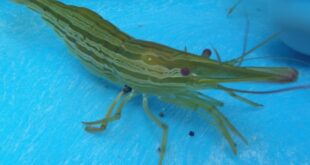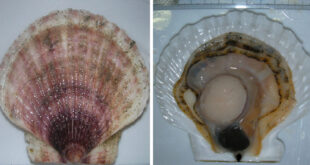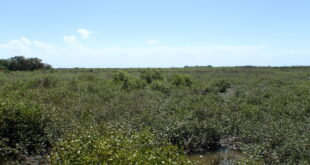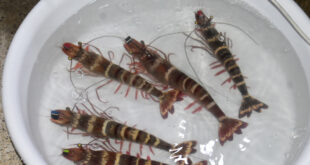By Development Communication Section / FG Ayson
The regional policy recommendations on the development and use of alternative dietary ingredients in aquaculture feed formulations was presented by SEAFDEC/AQD Chief, Dr. Felix Ayson, during the 47th Meeting of the Council of SEAFDEC at the Le Meridien, Chiang Rai Resort, Thailand on 31 March to 03 April 2015.
As a background, the ASEAN-SEAFDEC Ministers and Senior Officials adopted in 2011 the Resolution and Plan of Action which enjoin the ASEAN Member States (AMS) to:
improve the efficient use of aquatic feeds by strictly regulating the quality of manufactured feed and feed ingredients and support continued research for developing suitable alternative protein sources that will reduce the dependence on fish meal and other fish-based products.
- One of the priority areas in the AFCF (ASEAN Fisheries Consultative Forum) work plan (2011-2015) is the ‘development of better feeds for sustainable aquaculture.’
- Part of the AFCF work plan under feed development is to bring together the experts and AMS representatives to review R&D efforts on aquaculture feed formulations and define the region’s policy directions.
Recently, the Regional Technical Consultation (RTC) on Development and Use of Alternative Dietary Ingredients or Fish Meal Substitutes in Aquaculture Feed Formulations was held in NayPyiTaw, Myanmar, 9-11 December 2014 with support from the Government of Japan thru ASEAN Foundation, SEAFDEC/AQD, SEAFDEC Secretariat, and the Government of Myanmar.
The general objective of the recent RTC is to provide a forum for charting the regional priorities and future directions on aquafeed development, particularly on the use of alternative feed ingredients or substitutes for fish protein and oil, taking into consideration the environmental concerns and consumer demand for safe and high quality farmed aquatic products.
The RTC also aims to (1) review the ASEAN-SEAFDEC member country status, challenges and opportunities associated with the use of alternative dietary ingredients for aquaculture feeds, (2) identify specific advances made in the region with respect to the development and use of alternative ingredients for aquafeeds, and (3) define relevant policy recommendations on the use of alternative ingredients for feed formulations and development.
The meeting then came up with (1) the status report in each country on the utilization of fish by-catch, fish meal, and plant protein sources in commercial aquafeed production, and the feeding practices that improve feed efficiency; (2) updates on technological developments on the use of plants and other alternative feed ingredients as protein sources in aquafeeds and existing policies or initiatives that limit the use of feed ingredients of marine origin; and (3) a list of key issues, gaps, strategies and recommendations for the three trophic groups, based on feeding habits – herbivores, carnivores and omnivores.
Regional policy recommendations and follow-up actions for the development and use of alternative dietary ingredients in aquaculture feed development
| Issues | Policy Recommendations |
| Knowledge and technology | Create a network or regional forum for exchanging and sharing of R&D on feed formulation and feeding efficiencyProvide technical support to improve farmer’s knowledge on efficient feed and effective feeding managementPromote cooperation with other regions |
| Nutritional profiles of feed ingredients – incomplete information on proximate analysis such as fatty acid | Nutritional profiling of alternative ingredients |
| Statistics of aquafeed | Assess the capacity of feed milling companies as well as the data on import and export of raw materials for feed ingredients |
| Raw materials from illegal, unreported, and unregulated (IUU) fishing activity | Impose a system of traceability of raw materials and apply the catch documentation system |
| Feed formulation and efficiency | R&D on aquafeed quality, formulation and use of alternative dietary ingredients |
| Use of alternative dietary ingredients to replace fish meal | Promote mass production of high quality alternative ingredients |
| Supply of feed ingredients | Institute government programs to increase production and centralize supply of feed ingredients in each local governmentEstablish the local ingredients supplier network |
| Enactment of regulations and fishery laws to effectively manage the development of aquafeeds | Impose national aquafeed quality control to ensure that feed milling companies comply with regulations and fishery laws |
| Center (focal point) of ASEAN programs | AQD to work closely with AMS, research institutions, industry and international or regional organizationsCreate the ASEAN Forum (Program) on Development and Use of Alternative Dietary Ingredients in Aquaculture Feed Development that will include representatives of relevant stakeholders |
| Regional Cooperation | Establish the National Action Plan on Development and Use of Alternative Dietary Ingredients in Aquaculture Feed FormulationsIncrease awareness on importance of reducing dependence of aquaculture on feed ingredients of marine origin |
Next Steps and Immediate Actions
- Create a network or regional forum for exchanging and sharing of knowledge on research and development for aquatic animal nutrition
- Formulate laws and regulations to encourage feed companies to use plant proteins and oils in aquafeed production
- Establish the ASEAN Center Program on Development and Use of Alternative Dietary Ingredients in Aquaculture Feed Development

 SEAFDEC/AQD Southeast Asian Fisheries Development Center | Aquaculture Department
SEAFDEC/AQD Southeast Asian Fisheries Development Center | Aquaculture Department



